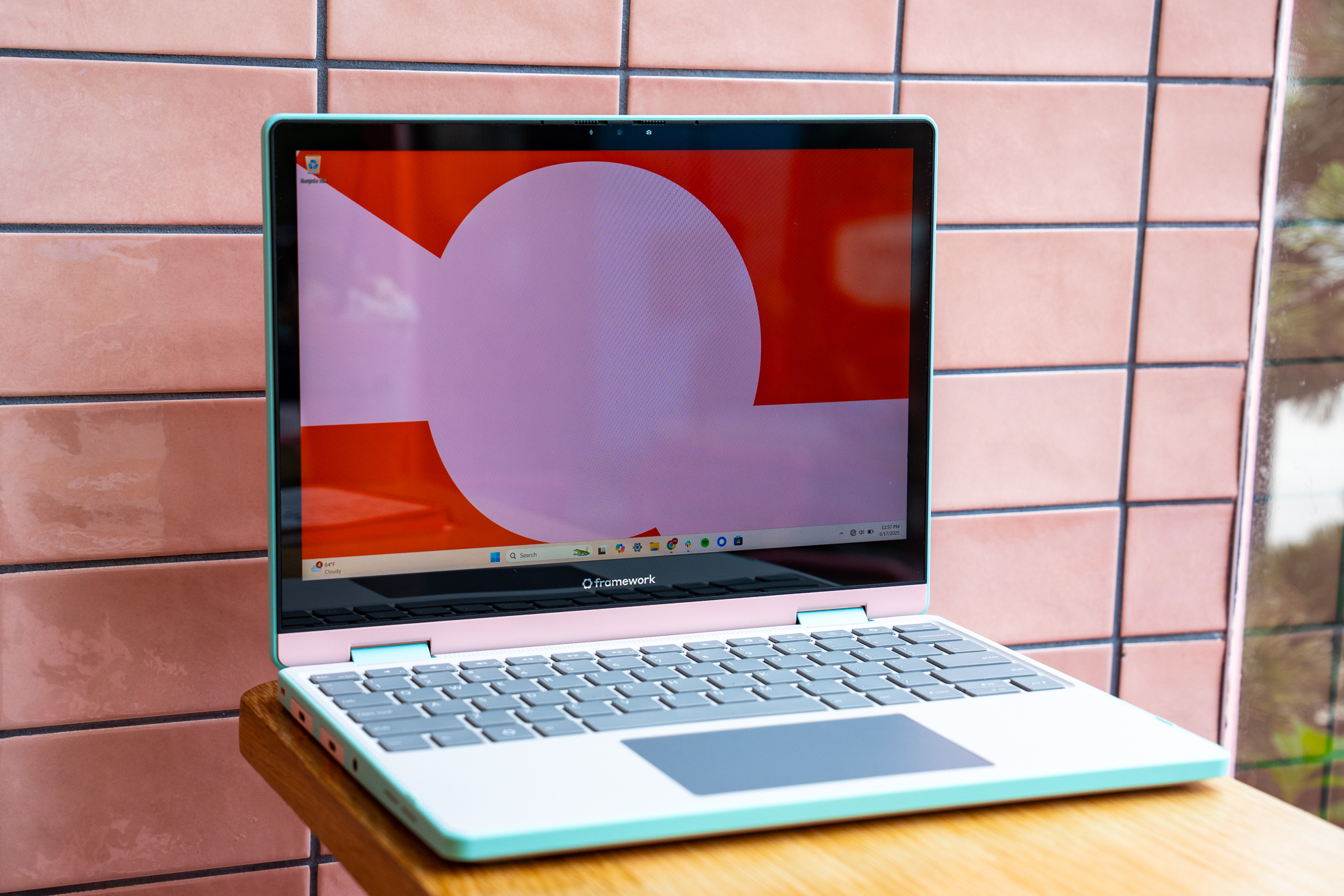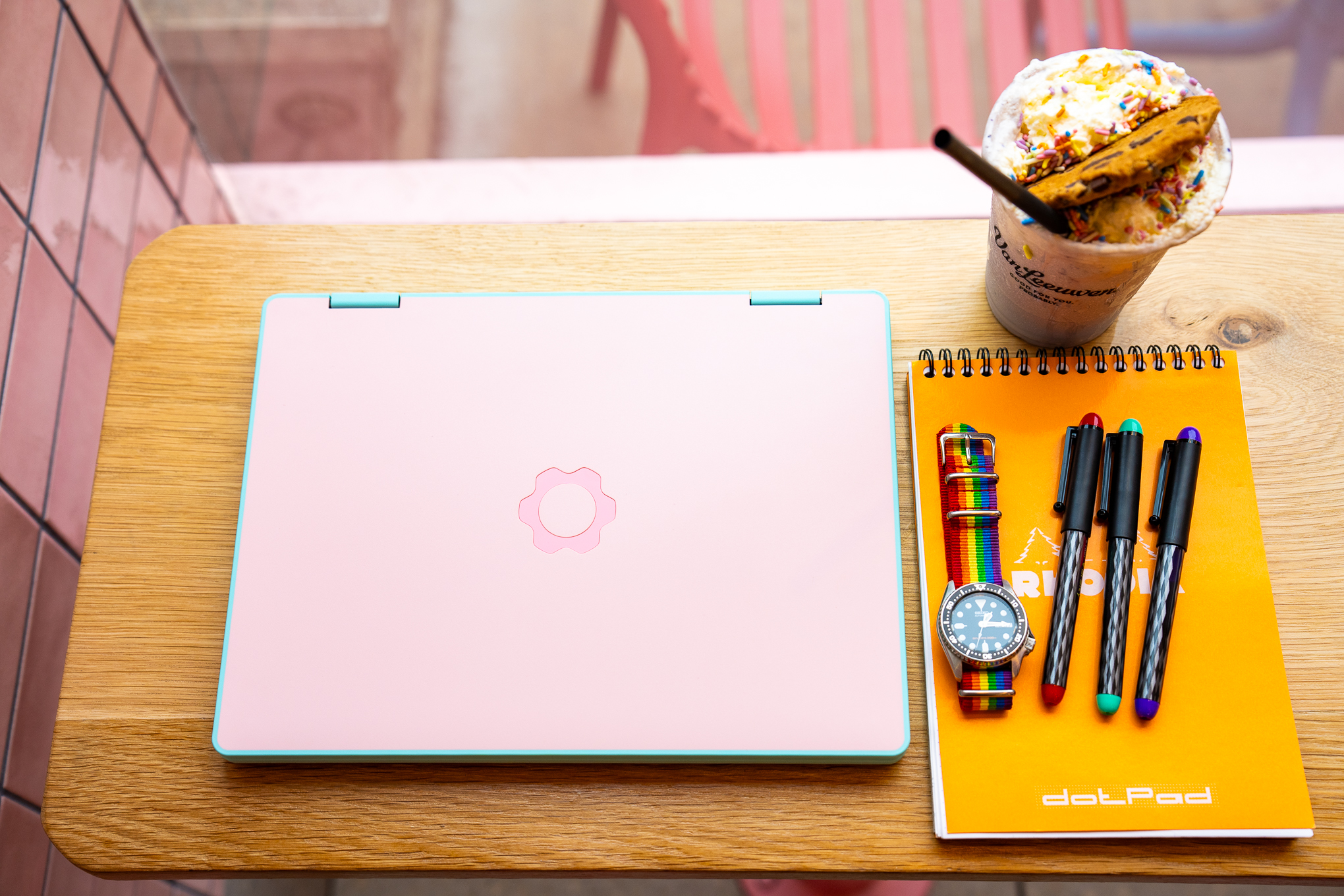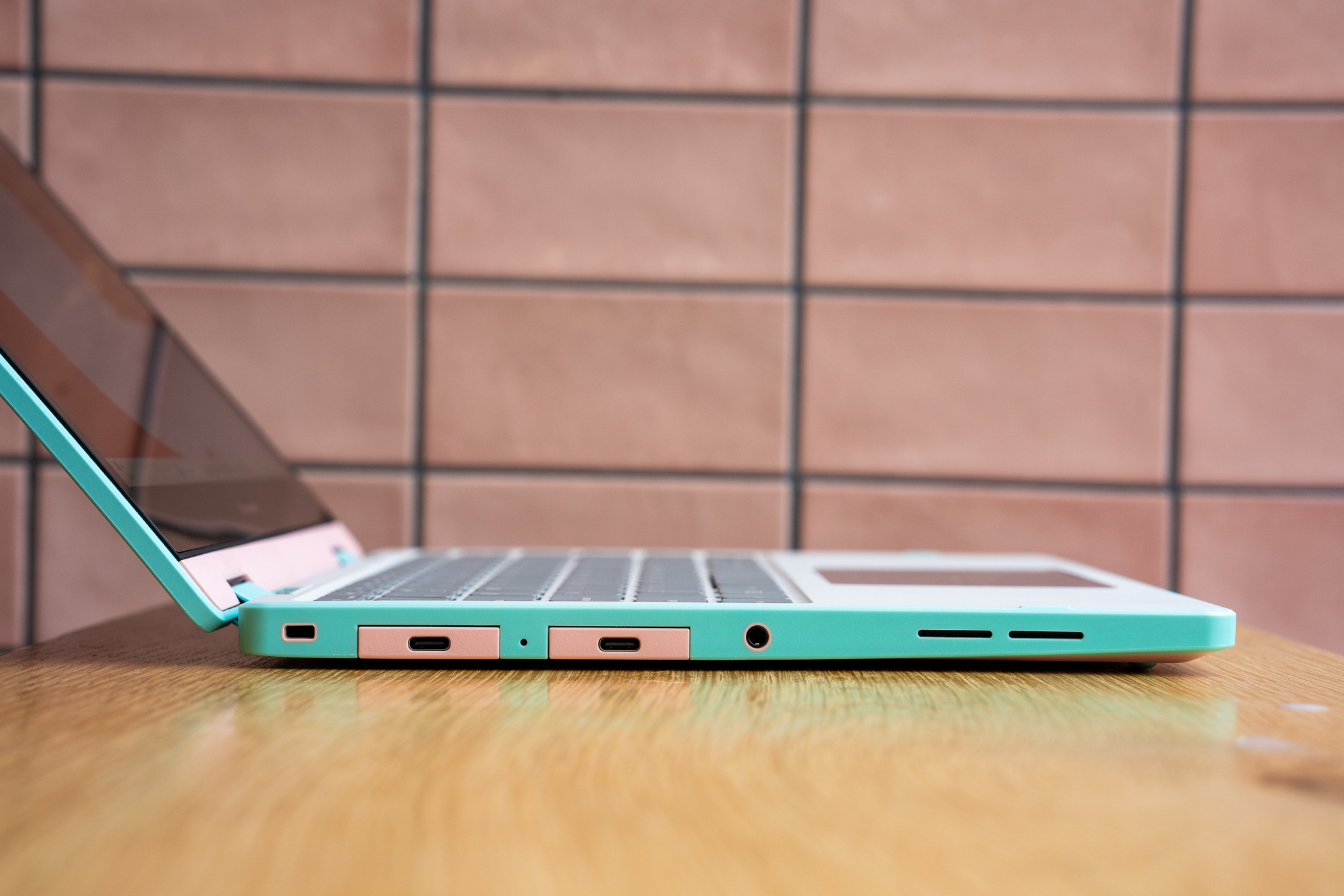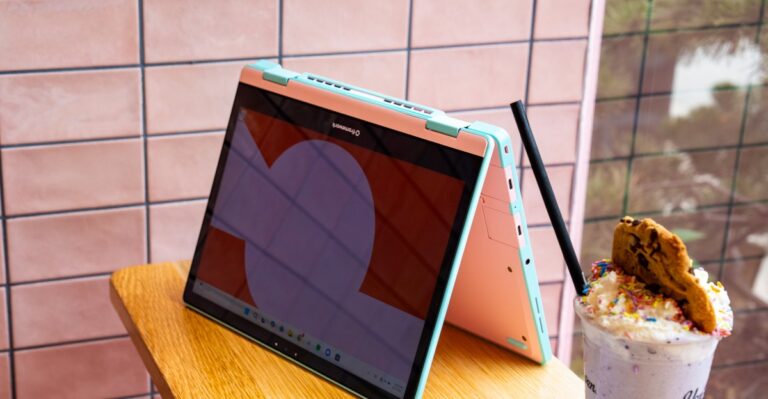Framework finally made a touchscreen laptop, and the convertible 2-in-1 is one of the coolest-looking computers ever made. It doesn’t have top-tier specs, but its two-year-old 13th Gen Intel Core i3 processor isn’t on its last legs just yet. Like Framework’s Laptop 13, the new Laptop 12 has modular ports and fully repairable innards. And you should be able to upgrade it to a newer chip eventually, given Framework’s business model of selling new parts for older laptops.
But charm aside, you’re still paying extra for repairability and upgradability. The Laptop 12’s $799 starting price, along with its middling webcam, keyboard, and chunky bezels still make it feel like a laptop for the true believers; others may have a hard time turning down similarly priced laptops with little to no repairability but better specs.

$799
The Good
- Easy repairs and potential upgrades
- Fun design
- Rubberized TPU edges make it more resilient for kids
- Modular ports with internal “child locks”
The Bad
- Not exactly cheap, especially with more RAM and storage
- Aging processor, starts with 8GB of RAM
- Chunky bezels
- No Windows Hello unlocking
The Laptop 12 is one of the most striking laptops I’ve ever seen. Its pink and blue “bubblegum” color scheme is particularly fantastic. The pastel colors are vibrant and the gray-on-gray keyboard pulls it together nicely, with left-aligned keycap legends giving it a slightly retro look.
- Screen: B
- Webcam: C
- Mic: C
- Keyboard: C
- Touchpad: B
- Port selection: A
- Speakers: C
- Number of ugly stickers to remove: 0
The exterior is plastic, with edges clad in thermoplastic polyurethane (TPU) for added resistance to dings and scratches. It feels well built with minimal flex, likely due to its rigid metal internal frame. I described its overall feel to a colleague as “thoughtful plastic.”
As with the Framework 13, I recommend the DIY Edition (which is how you get the more fun color options). It’s easier to assemble than the 13, with the keyboard connecting via pogo pins like the Laptop 16 instead of a delicate ribbon cable. You don’t even need a tool to install or replace the M.2 SSD. I had our unit assembled and installing Windows 11 off a USB flash drive in about 30 minutes.
Fire it up and you’re treated to a 12.2-inch screen that’s bright, crisp, and very responsive to touch or an optional stylus. Though, it has massive bezels on all sides. While the 1920 x 1200 resolution and 60Hz refresh aren’t anything special, the dead-simple replacement procedure is. Screen replacements this easy could be clutch for classroom deployments, or for giving it to a teen. The trackpad feels better than the one on the Framework 13, and nearly as good as the excellent mechanical one on the Surface Laptop 13-inch, only lacking the Surface’s satisfying ka-chunk sound.

The keyboard looks amazing, but I’m less enthused by its typing feel. Its tactile feedback is slightly muted, and on rare occasions, it missed a letter I thought should have registered. It has the same 1.5mm key travel as the Laptop 13, but it doesn’t have the same juice. It isn’t backlit.
The side-firing stereo speakers and built-in mic are serviceable. I didn’t mind listening to music or playing videos on the Laptop 12, especially with the convenience of kickstand tablet mode to prop it up with the keyboard out of the way. But the webcam is mediocre, looking nice in good lighting but smeary and bad in any indoor setting that isn’t bright.
Its biggest omission is support for Windows Hello; there isn’t even a fingerprint sensor, so get used to typing your password or PIN every time you wake it like it’s 2014. Framework confirmed this was a cost-saving measure, but dang, do I sorely miss it. As for battery life, it can get you through a full school day or even a lengthier, eight-hour work day of light use, though a lengthy video call or two can noticeably shorten that.


I wanted to test the entry-level configuration of the Laptop 12, but the review unit I received had 16GB of RAM instead of 8GB in its single DIMM slot and a 1TB SSD to go with the base Intel Core i3 1315U chip. With all the included expansion ports and a Windows 11 Home license, our config costs $1,086 — significantly higher than the $799 starting price. The 13th-Gen Intel chip is still a solid performer for light loads but it occasionally shows its age. You can hear the Laptop 12’s fan working pretty frequently — not at an annoying volume, but just a noticeable one (and a couple of times while the lid was closed for some reason). It isn’t difficult to bog the Laptop 12 down multitasking across many Chrome tabs while on a video call. I just fear what that 8GB entry-level might be like.
System |
Framework Laptop 12 / Intel Core i3 1315U 6C / 16GB / 1TB |
Framework Laptop 13 (2025) / Ryzen AI 7 350 8C / 32GB / 1TB |
Microsoft Surface Laptop 13-inch / Snapdragon X Plus 8C / 16GB / 512GB |
MacBook Air 13-inch M4 / 10C / 10C / 16GB / 512GB |
|---|---|---|---|---|
| Geekbench 6 CPU Single | 2243 | 2899 | 2437 | 3775 |
| Geekbench 6 CPU Multi | 6810 | 13568 | 11427 | 14899 |
| Geekbench 6 GPU (OpenCL) | 10307 | 24981 | 9391 | 30701 |
| Cinebench 2024 Single | 93 | 116 | 109 | 171 |
| Cinebench 2024 Multi | 267 | 832 | 682 | 736 |
| Sustained SSD reads (MB/s) | 5276.38 | 5279.21 | 3840.78 | 2910.04 |
| Sustained SSD writes (MB/s) | 4944.67 | 4967.27 | 3476.62 | 2115.57 |
This isn’t my laptop of choice for heavy photo editing, but folding it into tablet mode and processing images in Lightroom with a stylus is an enjoyable way to work on a handful of pictures casually. Though, high-resolution RAW files are painfully slow to import, and the keyboard deck inverted on your lap gets a little warm when the laptop is under load. Framework’s color-matched styluses are coming later, so I used a Metapen M2 sent with the review unit, which worked great.
1/9
I love that the modularity of its four ports allows me to choose a full-size SD card reader, something you don’t normally find on modern thin-and-light machines. Plus, if you opt to load it up with four USB-C ports (which can be matched to the colorful chassis), each one is capable of charging the laptop. And if you fear a child may fidget with the expansion cards by popping them in and out, there are internal screws you can tighten to prevent external tampering.

It’s hard not to love the Framework 12, but its drawbacks, like low starting RAM, an okay processor, and a slightly soft-feeling keyboard, are hard to swallow when it costs $799 and easily ramps up to over $1,000 with upgrades. At that price, it competes with much more powerful laptops such as the M4 MacBook Air (which, to be fair, lacks a touchscreen) and both the Surface Laptop 13-inch and Surface Pro 12-inch. The Framework could one day be upgraded to surpass those machines, but there’s no guarantee. The Laptop 13 has turned out to be the shining example of repairability and upgradeability, but the big-boy Laptop 16 is currently in a weird spot.
If Framework delivers on the Laptop 12’s upgrade path like it has on the 13, then it could be worth the price, either for a student who can grow with it or for just about anybody who wants a tinker-friendly touchscreen 2-in-1. The Laptop 12 has the potential to become more than a quirky experiment for kids. It could be one of the best examples of a laptop in this form factor.
Framework Laptop 12 (as reviewed)
- Display: 12.2-inch (1920 x 1200) 60Hz IPS touchscreen
- CPU: Intel Core i3 1315U (13th Gen)
- RAM: 16GB DDR5
- Storage: 1TB
- Webcam: 1080p (with privacy switch)
- Connectivity: Wi-Fi 6E, Bluetooth
- Ports: 2x USB-A 3.2, 2x Thunderbolt 4, HDMI 2.1, 3.5mm combo audio jack
- Weight: 2.87 pounds
- Dimensions: 11.3 x 8.42 x 0.73 inches
- Battery: 50Wh
- Price: $1,086
Photography by Antonio G. Di Benedetto / The Verge
Read the full article here
